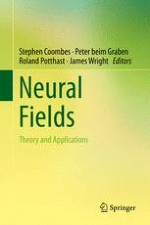2014 | OriginalPaper | Chapter
15. Equilibrium and Nonequilibrium Phase Transitions in a Continuum Model of an Anesthetized Cortex
Authors : D. Alistair Steyn-Ross, Moira L. Steyn-Ross, Jamie W. Sleigh
Published in: Neural Fields
Publisher: Springer Berlin Heidelberg
Activate our intelligent search to find suitable subject content or patents.
Select sections of text to find matching patents with Artificial Intelligence. powered by
Select sections of text to find additional relevant content using AI-assisted search. powered by
